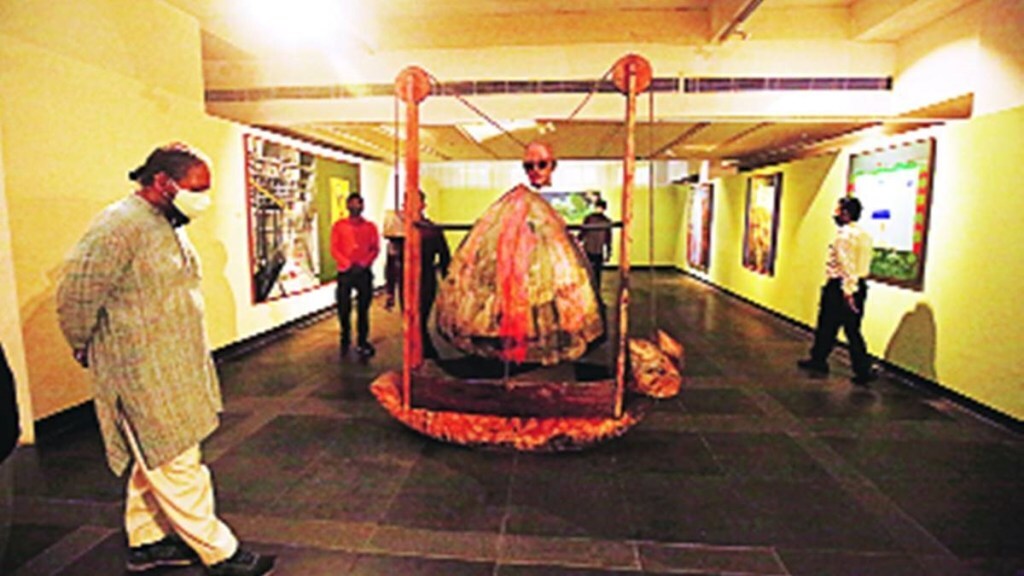Art of the steal
Delhi’s National Gallery of Modern Art is to take charge of Air India’s multi-million art collection, which was started in the 1950s and includes outstanding works from all the great Indian contemporary artists. A catalogue of the paintings is being prepared before shipping them to Delhi, but there is lurking suspicion among insiders that some of the paintings and artefacts collected over seven decades may be missing or replaced by fakes. There was minimal supervision of valuable artworks once the airline was nationalised more than half a century ago.
It is believed that another treasure trove of Indian art — the art collection of the Ministry of External Affairs (MEA), which is dispersed in Indian embassies around the world — has an even larger number of missing pieces. The collection was started in the 1950s by diplomat Badruddin Tyabji, who formed an objet d’art committee to pinpoint prominent artworks. Lalit Mansingh, an authority on art, when he served as foreign secretary, disclosed to journalist Shikha Trivedi that he had noticed that many priceless pieces in embassies in eastern Europe had been substituted by fakes and several masterpieces had disappeared. Trivedi herself smelt a rat when she got instant permission from then foreign secretary, S Jaishankar, to publish a photograph of a Jamini Roy painting from the embassy in Cuba for an article but the secretariat in South Block vetoed the foreign secretary’s clearance and refused permission to publish any photograph of artefacts from Indian embassies. Tyabji’s daughter Laila, who was on the MEA purchase committee for over 20 years, recalls warning that to safeguard against stealing or loss, it was not enough to simply make a list of the pieces in an MEA register but to take photographs of every embassy with paintings, carpets, silver objects, stone sculptures, etc.
Also read: Inside track by Coomi Kapoor: Deadline postponed?
Another important art collection from the early days of Independence is owned by the Tata Institute of Fundamental Research. Scientist Homi Bhabha, an art aficionado, had personally selected many of the paintings since PM Jawaharlal Nehru had permitted 1% of the institute’s budget to be earmarked for encouraging then struggling Indian artists. Bhabha had ensured that all the paintings were meticulously catalogued.
Cause and effect
Recently, an India-friendly American senator from a Western state in the United States (US) tipped off the Indian government that six US Senators were contemplating issuing a joint statement regretting that India was fast losing its democratic credentials, and moving towards dictatorship and oppressing minorities. External Affairs Minister S Jaishankar and National Security Adviser (NSA) Ajit Doval immediately swung into action. In a stern, informal message to the Joe Biden administration, it was pointed out that all six senators were Democrats. The move was scotched, but in the meantime, billionaire George Soros, a Democratic party funder, hit out at the Narendra Modi government on the Adani issue. The Indian government believes that such statements are really a reflection of the US government’s frustration with India over its continued friendly ties with Russia.
1977 model
For Rahul Gandhi’s supporters, the key objective of the Congress plenary session in Raipur is to ensure that he is projected as the united Opposition’s candidate against Modi in the 2024 elections. While the Congress is riding high after Rahul’s Bharat Jodo Yatra, most of the Opposition is hesitant to put all their eggs in the Gandhi basket. While Rahul may have shown single-minded dedication in his arduous yatra, he still continues to duck party responsibilities. Significantly, the most important Congress allies did not respond to the invitation to be present at the culmination of Rahul’s yatra in Srinagar. Aam Aadmi Party national convener Arvind Kejriwal’s supporters have pointed out how national poll surveys indicate that in the event of a direct contest with Modi, the Delhi Chief Minister scored higher than Rahul. Apart from exceptions like Nitish Kumar of the Janta Dal United (JDU), the general belief in the Opposition is that in 2024, the Janata Party alliance model of 1977, where no single leader was projected, would work best. Ideally, they would like Rahul to play the role of Jayaprakash Narayan, without actually joining the electoral fray — a formula which Rahul’s core team will not accept since it whittles their clout.
Also read: Inside track by Coomi Kapoor: 75 and counting: Firsts among many equals
Stepping aside
Nitish telephoned Rashtriya Janata Dal supremo Lalu Prasad Yadav at his hospital in Singapore to inform him that he wanted to host a grand reception to welcome him back after his successful kidney transplant. Lalu turned down the offer pointing out that as part of his post-operation recuperation plan, he has been advised to remain in isolation. While his political career was over, he raised a ticklish query with Nitish, as to when would he step down as chief minister and pass on the mantle to Lalu’s son Tejashwi Yadav as promised. The Bihar Chief Minister prevaricated, not giving a specific deadline.

